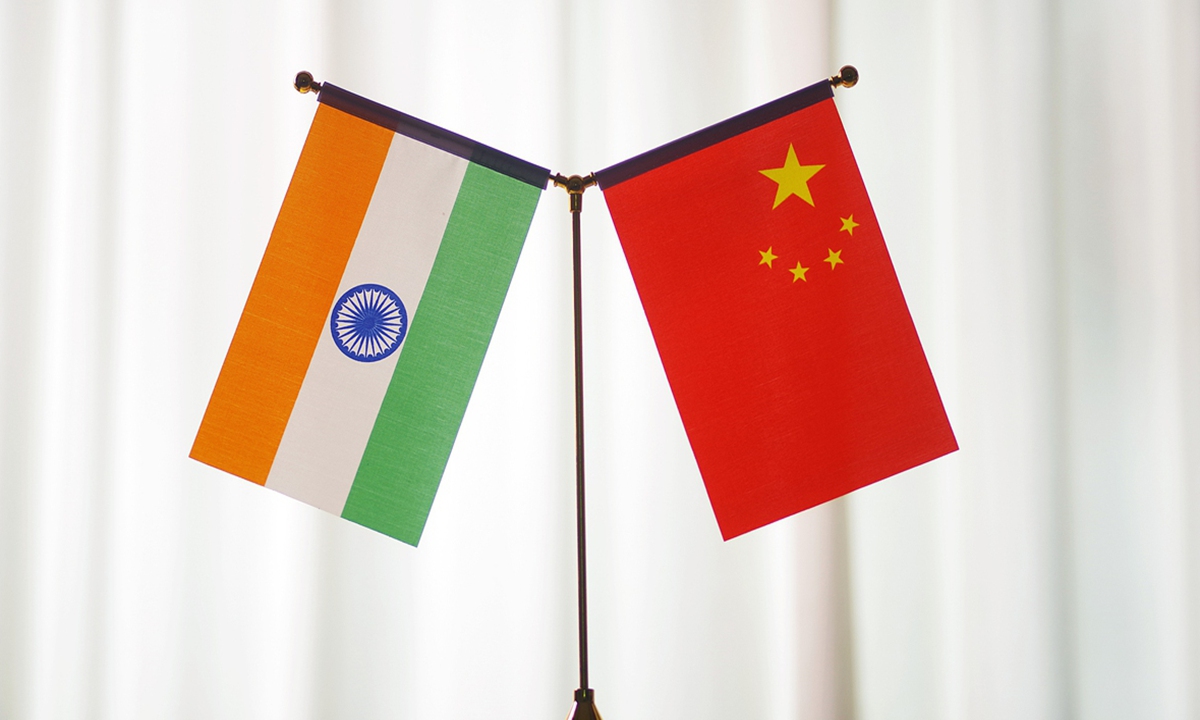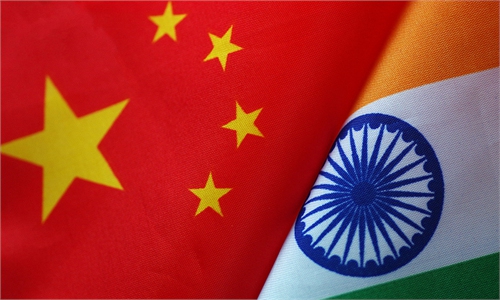
Photo:VCG
China and India on Sunday held the 16th round of corps commander level meeting, and the joint statement issued after the talks was very constructive, indicating that there is more consensus on the importance of maintaining peace and stability in the border region.It should be noted that the Chinese society has left resolving the China-India issues entirely in the hands of the country's professional team, but the Indian side is still very much driven and held back by domestic nationalism. So, while the information disclosed by the Chinese side is about the same as the content of the joint statement, the Indian media outlets reported more negative information, as has always been the case on the Indian side.
According to the Indian media, India has been requesting that China should "return to their April 2020 positions," which is the most favorable state for India after repeated encroachment and infiltration in the border area, and China will certainly not accept such a request. New Delhi's conditions for the disengagement of the two forces are also unrealistic. The Indian media this time also made a lot of hype about a PLA's J-10 fighter "breaching the Indian perceived Line of Actual Control." It's just like the guilty party filing a suit first to preempt action by the victim, a tactic of which India's foreign information dissemination is very fond of.
India has been trying to use diplomacy to influence negotiations in the border region. Western powers are coaxing and begging India, this has given New Delhi a strategic superiority that China, facing unprecedented strategic pressures from the US and its allies, should make some concessions to India on the border issue in exchange for India improving its relations with China and India distancing itself from the US strategy to contain China. New Delhi did not expect China's determination to defend its territory to be so strong that it had no intention of currying favor with India by backing down in the border area.
The second "trump card" that India considers itself to have is the economic card. After the conflict near the Galwan Valley, India has carried out various crackdowns on Chinese investments and companies in India, and many Chinese internet firms have withdrawn from India. Recently, India has clamped down on Chinese phones, including Xiaomi, VIVO and OPPO, which created huge problems for Chinese manufacturers, but such moves still cannot shake China's will to defend its territory.
In fact, India's crackdown on Chinese manufacturers is not entirely a retaliation for the border conflict. As the country's economic nationalism continues to swell, India is so envious of China's booming manufacturing and internet industries that it has always tried to take the market away from Chinese companies in a bandit fashion when it sees them succeeding in India.
However, India's manufacturing sector is too weak, and the country's overall industrial ecosystem is utterly incomparable to China's. Despite all efforts, in the end, New Delhi's imports and trade deficits with Beijing have still been expanding. For example, China-India trade has gone up to more than $67 billion in the first half of this year - China's exports to India reached a record $57.51 billion, while India's exports to China fell by 35 percent, accounting for only $9.57 billion. Chinese smartphone brands currently hold 60-70 percent of India's smartphone market. Their high quality and low prices have significantly increased the promotion of smartphones in India and pushed the country into the mobile internet era. China as a whole is clearly not afraid of India's clamoring for "decoupling from China," because it will only make New Delhi fall behind even further.
China has strong confidence in the border issue and its overall relationship with India. We are not afraid of New Delhi making trouble. India has far more troops in the border region than China, but China's infrastructure is quite advanced, while its ability to send forces in emergent scenarios has shocked India. In terms of diplomacy, China has understood thoroughly that the US and India are making use of each other, and their tricks to seek to pressure China are actually very cheap.
While consolidating its stance, Beijing has kept the door to improving relations with New Delhi open and taken a proactive stance. The basic fact that China is not India's strategic enemy is gradually coming into play: India now is aware that if its ties with China are too bad, it will fall into the US strategic trap and be exploited as a tool, and if it falls in a mutual depletion with China, it will only benefit the US. Thus, New Delhi has also been constantly adjusting its diplomatic distance from Beijing and Washington. And India's efforts to maximize its interests clearly don't include turning the Himalayas into a US front line to contain China or turning itself into a US strategic outpost against China.
Generally speaking, the intense anti-Chinese sentiment in India is now at the ebb after the 2020 Galwan Valley border clash. We certainly hope that this tendency will continue and that India will slowly realize that putting the border dispute with China in a proper place and mending its relationship with China is more in its national interests.
The author is a commentator with the Global Times. opinion@globaltimes.com.cn


